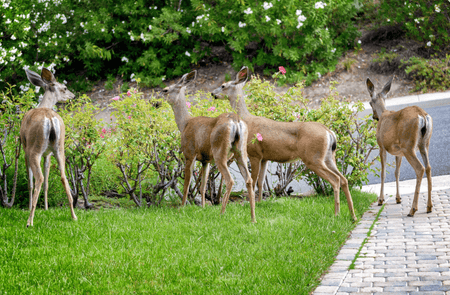How to Attract Hummingbirds with Native Plants

@gardenforwildlife On #NationalHummingbirdDay, you can take steps to support hummingbirds and other wildlife right at home. Find all our best tips in our newest blog post, How To Attract Hummingbirds with Native Plants at the link in our bio. #NativePlants #GardenForWildlife #Hummingbirds ♬ Inspiring Emotional Piano - Metrow Ar
Simple Steps to Attracting Hummingbirds
Hummingbirds are known for their small size and remarkable ability to remember details such as the location and nectar content of flowers.
Of the more than 350 hummingbird species, 16 breed in the United States, with just one, the ruby-throated hummingbird, nesting regularly east of the Mississippi River.
Sadly, recently reported continent wide declines of Eastern North America’s most common hummingbird, the ruby-throated hummingbird, show decreases by 17% over a 15 year period.
By growing native plants and providing water and a handful of other resources, you can easily attract hummingbirds to your property, helping them refuel while you enjoy these winged jewels in action. It doesn’t matter whether you have acres of gardens or just a balcony with a few pots. Once hummingbirds discover your nectar sources, they’ll remember to come back for more.
Guide to Plants and Hummingbirds

Hummingbirds are attracted to nectar-producing flowers native to the bird's range, like coral honeysuckle, bee balm, buckeye, and cardinal flower.
Many of the plants they naturally feed on have red or orange blooms. Most hummingbird feeders are red to mimic the native plants they naturally feed on. They use their thin beaks and long tongues to drink nectar from flowers.
One of the keys to keeping hummingbirds coming is to set out annuals and perennials with different blooming periods. By doing so, you'll be certain that there will be a steady supply of flowers in your yard from early spring until well into the fall.
Each of our Hummingbird Heroes collections includes three native perennial plants (two of each) that are especially beneficial to hummingbirds.
In the Northeast collection, you’ll receive:
- Cardinal Flower (Lobelia cardinalis)
- Eastern Columbine (Aquilegia canadensis)
- Wild Bergamot, Bee Balm (Monarda fistulosa)
The Southeast collection includes:
- Scarlet Sage (Salvia coccinea)
- Coral Honeysuckle (Lonicera sempervirens)
- Pink Beardtongue (Penstemon australis)
Offering brightly colored tubular flowers that attract and provide nectar for hummingbirds, these native plant collections also support other key wildlife species, including butterflies, moths, and bees. The collections are selected to bloom across three seasons and return each year. You’ll be a hummingbird hotspot in no time!
Step-by-step: attract hummingbirds to your garden
#1 PLANT NATIVE PLANTS
Consider the color and shape of your plants before you purchase. Almost anything red and tubular is a favorite. Pink and orange are also desirable, followed by purple, blue and yellow.
Popular hummingbird native plants include native honeysuckles, most varieties of sages or salvia, many types of columbine and perennial penstemons. Other good bets are bee balm or wild bergamot, and cardinal flower. As with anything, native plants are best - they’re well suited to the sun and moisture in your area and will attract hummingbirds. You can shop our native plants by state or search the National Wildlife Federation Plant Finder to identify the best options for where you’re planting.
#2 DON’T USE CHEMICALS - GO ORGANIC!
Hummingbirds feed their babies a diet made of mostly small insects. In addition, adult birds need regular doses of protein from mosquitoes, spiders, thrips, gnats and other arthropods. Using a product that kills insects will also harm hummingbirds, as well as other birds and wildlife.
Chemical applications for gardening also come with a climate-harming price tag. Synthetic nitrogen fertilizers and chemical pesticides are made by burning fossil fuels which put carbon pollution into the air. Fertilizer runoff not only pollutes our water and threatens wildlife habitat, but can add to air pollution. Your native plants won’t need added fertilizer. In addition, scientists are working on innovative solutions to solve the problem of mosquito control in recent years.
#3 PROVIDE WATER

Hummingbirds like to take baths. A constant source of water will complete any hummingbird haven. If you have a birdbath, place rocks in it to give the tiny birds a chance to bathe. Or add a drip fountain attachment! Misting devices are also an especially attractive water source for hummingbirds. Bold birds will utilize running sprinklers. Regardless of what water source you provide for hummingbirds, it is helpful to have perches nearby for wet birds to rest and preen, so leave any branches untrimmed.

Find Native Plants by Zip Code
We took the guesswork out of planting native. Check your zip to see what ships!


















